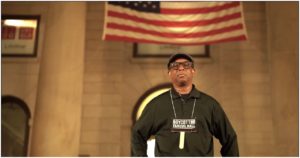Shattering experiences
Many reports of sexual, physical and emotional abuse of children at boarding and residential schools across the U.S. and Canada have come to light, with much more undoubtedly having been unreported, ignored or covered up. In 1913, 276 Carlisle students petitioned the U.S. Department of the Interior to investigate its conditions, including harsh punishments for minor infractions.
A 2024 Interior Department review found at least 973 Native American children died at 400 federally funded schools. McBride said the true number is likely in the thousands. The shattering experiences factored into President Joe Biden’s apology last year.
The Pennsylvania school’s legacy remains complex, said Amanda Cheromiah of Laguna Pueblo, who directs the Center for the Futures of Native Peoples at Dickinson College in Carlisle. “There were such diverse experiences, some were good and some were bad — and everywhere in between,” Cheromiah said. Six of her relatives attended Carlisle.
Cheromiah said several hundred people attended services in early October for the 16 Cheyenne and Arapaho children. She called it “one of the most memorable moments that I’ve ever heard other people share.”
Some tribes are not interested in opening their children’s graves. Because of poor documentation, others may never be returned. A grave thought to contain a 15-year-old Wichita boy was found to hold someone else’s remains last year. Expecting a 13- or 14-year-old boy from the Catawba Indian Nation of South Carolina in 2022, the team instead found a female teenager. Their remains were reburied, the graves marked unknown.
Norene Starr, a Cheyenne and Arapaho Tribes projects coordinator who led their repatriation, called it a “federal atrocity” that the exhumed remains of two more students didn’t match their gravestones and had to be reburied. She’s working with forensic experts to identify them.
“That’s gonna be a long, long journey,” Starr said.
Since repatriations began at Carlisle in 2017, the bodies of 58 students have been returned, leaving 118 graves with Native American or Alaska Native names. About 20 more contain unidentified Native children.






